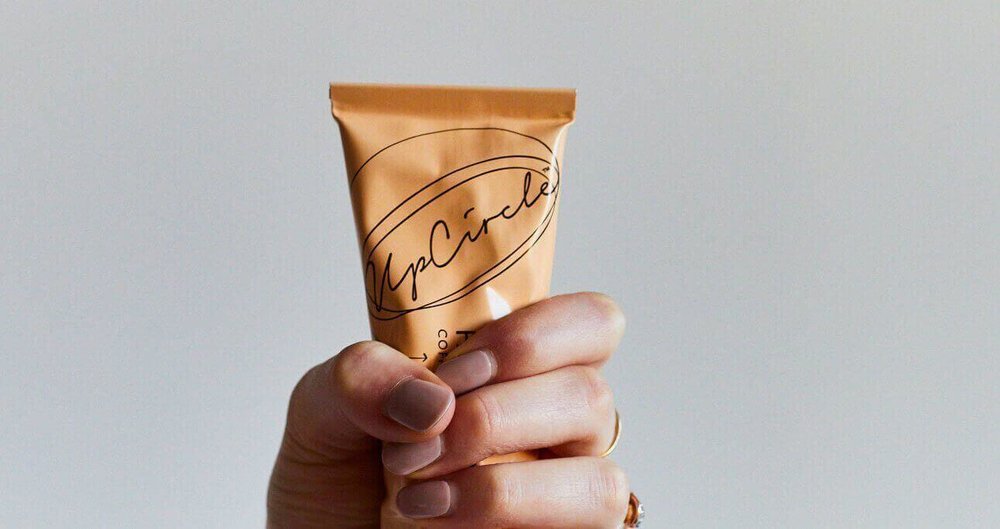How The Fast Fashion Industry is Killing the Planet
Posted by Pawan Saunya on
If you walk into H&M, Zara, or Forever 21, you’re going to immediately get a pretty good idea of the fast fashion industry. The industry is one of companies and retailers that pump out on-trend clothes at ridiculously quick rates for ridiculously cheap prices.
These fast fashion clothes are able to be produced quickly and cheaply because of the sacrifices the companies make. Instead of making high-quality clothes that will last you years, they make poor quality clothes that will barely last you months (so you’ll have to come back to them and buy more). Instead of paying their workers a living wage, they make them work long hours and pay them next to nothing. Instead of being mindful of their environmental practices, they pollute, release CO2, and create monumental amounts of waste to no end.
The fast fashion industry has created a vicious clothing cycle that consumers buy into. Instead of buying a few high-quality, timeless pieces that will last them for years, consumers opt to buy a ton of low-quality, on-trend pieces that will only last a few months- either because the fabric gave out or because it’s no longer “in style”.
The cheap price point of fast fashion clothing is enabling this overconsumption of textiles. Most consumers no longer have to be mindful about their clothing purchases, because they can go to H&M and buy a dress for the price of a latte. We buy twice as much clothing as we did just 15 years ago, and this gap is only growing.
Between the growing demand of consumers for cheap, on-trend clothes and the irresponsible production practices of fast fashion companies, the industry has positioned itself as one of the largest polluting industries in the world- second only to oil and gas- and as an industry responsible for 5% of global carbon emissions, over 90 million tons of waste, and .6-1.7 million tons of ocean microplastic pollution.
The negative impacts of the industry don’t stop at its unprecedented environmental impact- the industry barely pays its workers. They exploit their labor force, which is 85% women, and force them to work long hours for below a living wage. These workers are often in unsafe working conditions- some have to deal with the health impacts of handling chemicals all day, and some of them have to work in buildings that are on the verge of collapse. A perfect example of this worker mistreatment was the Rana Plaza collapse in Bangladesh in 2013. Over 1800 garment factory workers were killed because management didn’t take workers’ fear of the building collapsing seriously- they were too focused on turning a profit.
As you can see, the magnitude of the impacts of the fast fashion industry is huge. The industry employs 40 million people, turns a profit of around $3 trillion, and is still growing. However, there is a lot of room for consumers to take charge and demand change.
For one, we can boycott fast fashion altogether. While the industry can increase workers’ wages, decrease chemical use and create textile recycling programs to lessen their social and environmental impact, the reality is that this model of unprecedented fast production and consumption of textiles is inherently unsustainable. The sustainable model of textiles is built off of producing and consuming less, and this is a model that will never work for the fast fashion industry. So, as consumers, we need to shift away from fast fashion and support companies that produce timeless pieces that won’t go out of style within a month (and that also utilize ethical, sustainable practices), or shift towards buying second hand if the pricepoint of the ethical and sustainable brands is too fiscally unattainable.
Consumers can also start valuing the clothing they have and be chronic outfit repeaters (a great label in my book). If we start loving and living with what we already have and stop our urge to revamp our wardrobe every couple of months, we can make a huge dent in the demand for fast fashion and clothing in general. However, in order for most people to start truly loving and valuing their clothes, there would have to be some major shifts within society. People will need to stop feeling as if their self worth comes from their appearance, and brands will need to stop marketing towards vulnerable young women in a way that makes them feel insecure if they don’t adopt the latest trends.
If you’re interested in learning more about the fast fashion industry, we recommend watching the documentary “The True Cost”.

Maddie Vos
is in charge of maintaining the Zero Waste Club community through regular video content. A keen videographer, she wants to spread the message of sustainability to the masses. She currently is living and working in London, and enjoys yoga and art in her free time.

Kayla Guilliams
is the blog manager for Zero Waste Club, combining her love for writing with her passion for all things environmental sustainability. She is currently a student at the University of North Carolina at Chapel Hill where she is studying journalism, environmental studies, and food studies in hopes of building a career in environmental activism. You can find her on Instagram as @kaylaguilliams.
How and Why the Beauty Industry Needs to Change
Posted by Pawan Saunya onIt’s no secret that the beauty industry is wildly unsustainable. Between all the plastic packaging and questionable chemicals used in production to the constant push for consumerism in marketing, the beauty world has become notorious for being damaging to the environment- and it’s only going to get worse.
As the reach of beauty gurus and makeup obsessed Instagram influencers expands, so will the growth of the beauty industry. As it grows, it will only become more detrimental to the environment- meaning the industry needs to transform.
While the industry has the capacity to move in a sustainable direction, it won’t do so without a push from consumers. Consumers need to vote with their dollars by supporting sustainable beauty brands that are good for both people and the planet, rather than supporting brands who have no intention of acting sustainably.
The three main areas where the beauty industry impacts the environment are ingredients, packaging, and marketing. Most beauty brands are unsustainable in all three areas, but there are also a lot of brands that are sustainable in all three areas- meaning integrating sustainability isn’t an impossible feat.

INGREDIENTS
THE PROBLEM: A lot of beauty products are laced with harmful chemicals, particularly in the US where there are very few regulations on the beauty industry. The Environmental Working Group is dedicated to informing consumers of what chemicals are in the beauty products they buy, and the results of their research aren’t pretty. They found that 88 different chemicals have been found in more 73,000 beauty products in the U.S. since 2009, and the chemicals they found have been linked to birth defects and cancer.
Some chemicals to watch out for include artificial fragrances, parabens, phthalates, formaldehyde, and oxybenzone. The regulation of these chemicals in products varies depending on the country, so self-regulating by buying products made of natural ingredients is the only way to make sure you’re safe from these chemicals.
THE SOLUTION: Products made from natural ingredients are better for the earth, are usually more effective and are less likely to cause skin irritation. However, when buying natural products you have to be aware of greenwashing. A lot of companies will label their products as natural when they aren’t. To ensure that the product you’re buying is safe and actually natural, read the product label and watch out for harmful chemicals.
A lot of brands are embracing the use of natural ingredients to improve the health of consumers and the quality of their products. RMS beauty sources safe, organic ingredients and are completely transparent about everything that goes into their products. Their founder, Rose-Marie, decided to use this business model after she discovered the heavy metals that were the root of her health issues were also in the beauty products she used every day. Other companies like Au Naturale share the same sentiments, and only use naturally derived and ethically sourced ingredients for the sake of human health and the environment.
Upcircle, another beauty brand, is taking sustainable ingredients to the next level by using food waste to craft their products. They recover leftover coffee grounds, hemp husks and tea leaves that would have otherwise gone to landfills and reinvent them into beauty products like scrubs and face masks. Their products are also ethically and sustainably manufactured locally in the UK, making them the pinnacle of sustainable beauty.

PACKAGING
THE PROBLEM: The beauty industry produces around 120 million units of packaging every year, according to Zero Waste Week, and most of this packaging is made using various types of plastic. The packing is generally hard to recycle- you have to either mail it to companies like TerraCycle, drop it off at select stores that will accept it, or find an innovative way to reuse it. This is viewed as inconvenient to most consumers, so makeup packaging often gets sent straight to the landfill.
THE SOLUTION: There are several options to improve the sustainability of beauty packaging because there are a lot of materials that are by far better than plastic for the environment.
First, there are compostable packaging options. Compostable cardboard is most often used to manufacture boxes, but some companies are innovating different ways to take advantage of compostable options. Some brands, like Meow Meow Tweet and Soué, use compostable tubes to package products like deodorant and lip balm. Other brands, like LOLI, are using compostable bags to ship and package their orders.
Other sustainable materials include glass and aluminum- both of which are infinitely and easily recyclable. Several beauty brands have started packaging their makeup in containers made solely of glass and aluminum. Upcircle, who we mentioned earlier for their ingenious use of sustainable ingredients, packages their face scrubs in aluminum tubes that are 100% recyclable. Aether Beauty sells vegan and cruelty-free eye shadow in a palette that is made of aluminum and is 100% recyclable at the end of its life (and 1% of their sales go to The Rainforest Foundation). It’s also easy to find independent brands on Etsy that sell beauty products that are packaged in glass.
Some companies are taking a different route and are offering refillable makeup to cut down on packaging altogether. Zao allows you to buy products like highlighter, bronzer and eye shadow in a bamboo case once, and then buy minimally packaged refills when you run out of the product. Alima Pure offers a similar model with its refillable compacts, as well as brands like Plaine Products who offer refillable shampoo, body wash, and body lotion. Some companies, like Lush, are completely ditching packaging, and are offering lotion, shampoo, soap, and other products completely free of packaging

MARKETING
THE PROBLEM: A lot of beauty companies market by making consumers feel the need to buy their products to be more beautiful, accepted, and happy. They do this by pushing an ideal look and a “more is better” philosophy. While this has made sales skyrocket, it has done so unethically and unsustainably.
Pushing an ideal look and supporting the idea that buying items is a path to happiness is not only detrimental to the mental health of consumers, but to the earth as well. Women have become increasingly insecure, and have been buying beauty products at increasingly high rates. This has pushed beauty brands to use more natural resources, energy, water, and plastic to produce more and more products.
This sheer increase in demand is obviously bad for the environment, but it goes deeper than that- its a vicious cycle. As consumers buy more products, they value the products they buy and have less, so they increasingly feel unfulfilled with what they have and lean on consumerism as a crutch to happiness, leading them to buy more products and start the cycle all over again.
THE SOLUTION: In order to spare the mental health of their consumers and decrease the environmental impact of excessive consumerism, beauty brands need to embrace diversity in their marketing. They need to stop pushing this idea that there’s an “ideal” way to look, and need to push for their consumers to embrace their imperfections and use cosmetics as a way to have fun and embrace their beauty, rather than using them as a way to fit an “ideal” standard of beauty. This can be done by having diverse marketing that includes acne, diverse body shapes, and people of all color.

Overall, the beauty industry needs to be transformed for the sake of our planet. As consumers, we can aid in this transition by voting with our dollars. When we choose to buy from brands that use recyclable packaging and natural ingredients and market themselves using diversity and imperfections, we’re investing in the sustainable beauty industry and not supporting companies that don’t value sustainability as a priority. This will force brands to change their practices if they want to make it in the beauty world.

Kayla Guilliams
Is the blog manager for Zero Waste Club, combining her love for writing with her passion for all things environmental sustainability. She is currently a student at the University of North Carolina at Chapel Hill where she is studying journalism, environmental studies, and food studies in hopes of building a career in environmental activism. You can find her on Instagram as @kaylaguilliams.
